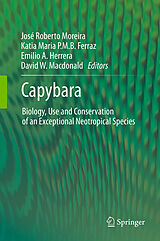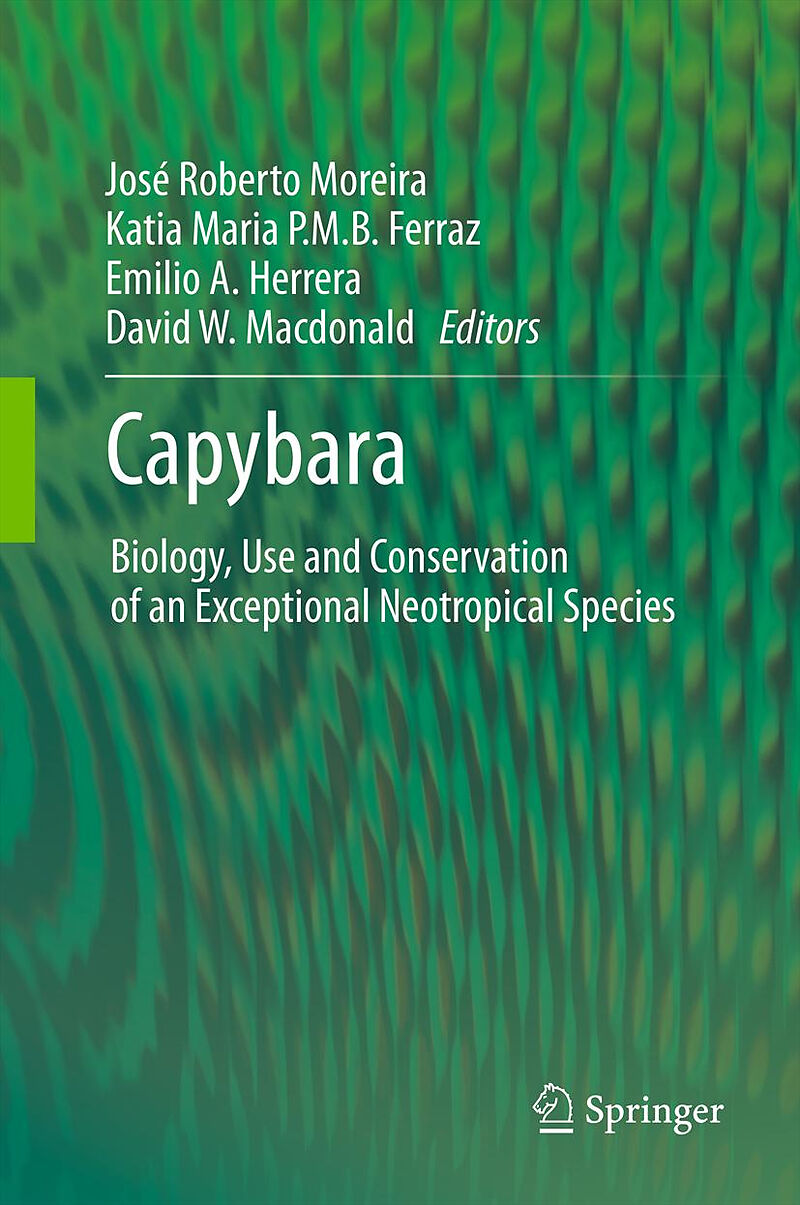Capybara
Einband:
Fester Einband
EAN:
9781461439998
Untertitel:
Biology, Use and Conservation of an Exceptional Neotropical Species
Herausgeber:
Springer New York
Auflage:
2013
Anzahl Seiten:
440
Erscheinungsdatum:
16.08.2012
ISBN:
146143999X
The capybara is the neotropical mammal with the highest potential for production and domestication. Amongst the favorable characteristics for domestication we can list its high prolificacy, rapid growth rate, a herbivorous diet, social behavior and relative tameness. The genus (with only two species) is found from the Panama Canal to the north of Argentina on the east of the Andes. Chile is the only country in South America where the capybara is not found. The species is eaten all over its range, especially by poor, rural and traditional communities engaged in subsistence hunting. On the other hand, in large urban settlements wildlife is consumed by city dwellers as a delicacy. The sustainable management of capybara in the wild has been adopted by some South American countries, while others have encouraged capybara rearing in captivity.
Assembles the scientists who have produced the most relevant research about the species The book has over 45 authors of nine different nationalities in a multidisciplinary work about a single species The research in this book analyzes the neotropical mammal with the highest potential for production and domestication
Klappentext
Capybaras are not merely unusual, they are extraordinary. It is widely known that they are the largest living rodent (c. 50kg), but it is less well known that their biology is exceptional in many other regards, as documented in this book, Capybara: Biology, Use and Conservation of an Exceptional Neotropical Species. With a suit of adaptations to a semi-aquatic lifestyle, and a remarkable social system, the capybara is the South American ecological equivalent of the medium-sized ungulates of Africa. Their size, adaptations and habitat make them fascinating in their own right, and a revealing model for studies of the evolution of animal societies. Furthermore, from prehistory to the present day they have been hunted for their meat and skins, and nowadays they are both farmed and harvested, which makes them an illuminating case study for discussions of sustainable use. This blend of attributes makes the capybara a focus of specialist interest and a source of general principles, and these two ends of the readership spectrum are both encompassed by the extraordinary international team of 36 authors that have contributed the 24 inter-disciplinary chapters of this book. Written in an accessible style that will satisfy generalists, practitioners and specialists alike, this book represents the compendious 'one-stop-shop' that will be the benchmark publication on capybaras and on neotropical wildlife management for years to come.
Inhalt
Foreword.- Preface.- Part I: Biology, Ecology and Evolution.- Taxonomy, natural history and distribution of the capybara.- Paleontology, evolution and systematics of capybara.- Phylogenetics of Caviomorph rodents and genetic perspectives on the evolution of sociality and mating systems in the Caviidae.- Foraging strategies and feeding habits of capybaras.- Capybara digestive adaptations.- Reproductive morphology and physiology of the male capybara.- Morphology and reproductive physiology of female capybaras.- Capybara demographic traits.- Diseases of capybara.- Capybara scent glands and scent-marking behavior.- Capybara social behavior and use of space: patterns and processes.- Part II: Production.- Products and uses of capybaras.- Confined and semi-confined production systems for capybaras.- Social and spatial relationships of capybaras in a semi-confined production system.- Feeds and nutrition of farmed capybaras.- The impact of management practices on female capybara reproductive parameters in captivity.- The sustainable management of capybaras.- Part III: Conservation.- Capybaras as a source of protein: utilization and management in Venezuela.- Conservation and use of the capybara and the lesser capybara in Colombia.- Capybara production in Brazil: captive breeding or sustainable management?.- Capybaras use in Argentina.- Counting capybaras.- Brazilian spotted fever: the role of capybaras.- The capybara paradigm: from sociality to sustainability.- Index.

Leider konnten wir für diesen Artikel keine Preise ermitteln ...
billigbuch.ch sucht jetzt für Sie die besten Angebote ...
Die aktuellen Verkaufspreise von 6 Onlineshops werden in Realtime abgefragt.
Sie können das gewünschte Produkt anschliessend direkt beim Anbieter Ihrer Wahl bestellen.
Loading...
Die aktuellen Verkaufspreise von 6 Onlineshops werden in Realtime abgefragt.
Sie können das gewünschte Produkt anschliessend direkt beim Anbieter Ihrer Wahl bestellen.
| # | Onlineshop | Preis CHF | Versand CHF | Total CHF | ||
|---|---|---|---|---|---|---|
| 1 | Seller | 0.00 | 0.00 | 0.00 |
